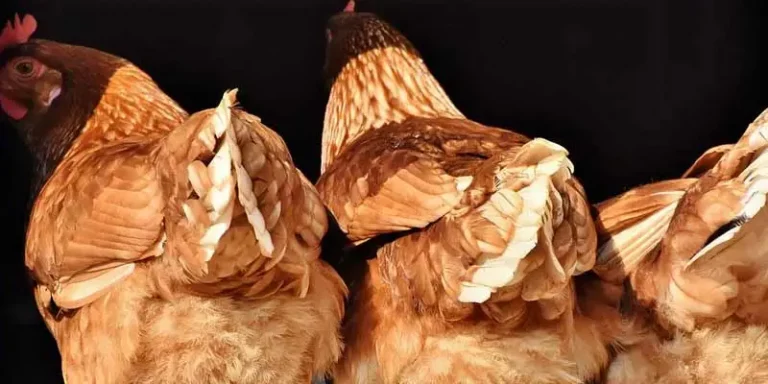Have you ever wondered why chickens preen themselves? It’s because they have a preen gland! By the end of this article, you’ll finish knowing everything about the gland and get to know some interesting facts about it.
What Is The Preen Gland On A Chicken?
The preen gland is a glandular structure located on the back of a chicken’s head. It is also known by its scientific name as the uropygial gland. The purpose of this organ is to produce an oily secretion that the bird uses to remove feathers, clean itself, and waterproof its plumage. Birds with preen glands generally have cleaner feathers than birds without them.
What Does the Preen Gland Do?
The preen gland secretes oil that has many uses in birds’ lives and helps them stay healthy. The oil produced by this gland can be used as both a lubricant and an antibacterial agent. It helps keep feathers from becoming brittle or breaking off during molting season and keeps them soft and pliable enough for flight.
One of the main jobs of this gland is to waterproof feathers so they don’t absorb water when chickens are swimming or bathing. This makes it easier for them to fly through rainy or foggy conditions without becoming weighed down by water droplets that would otherwise make flying difficult or impossible.
If a chicken’s feathers become wet from rain or splashing in the water, they can dry out quickly once they are exposed to air again because they already have protection from moisture thanks to their preen glands which produce natural oils.
Where Is The Preen Gland Located On A Chicken?
The preen gland is a small structure located on the back of a chicken. It produces an oily substance that helps keep the feathers of the chicken waterproof, and also gives them their characteristic sheen. The purpose of this gland is to help keep the bird’s feathers in good condition.
The preen gland is usually located near the top of the tail, but it can also be found near other parts of the body as well. In some breeds of chickens, however, it may be easier to find than others.
In some breeds of chickens, such as Silkies and Polish chickens, it is easier to see than in other breeds because they tend to have more feathers on their heads and necks than other types of chickens do.
What is Preening?
Preening is a behavior in which animals clean or groom themselves. It is an activity that is usually performed before or after another behavior, and it can be useful in maintaining physical health and hygiene, as well as creating a social bond between individuals.
Preening helps to remove dirt, parasites, and other materials from feathers or fur. Many birds preen by rubbing their heads on their wings (and in some cases their feet) before preening their bodies. This may help to keep the feathers in good condition by removing dirt and other materials which might damage them.
Preening may also help to spread oils from the uropygial gland over the feathers of birds to keep them healthy and waterproof. The oil is produced by the uropygial gland (also known as the preen gland) at the base of the tail in most birds.
In many species this oil is secreted onto one part of the plumage at a time (for example, only on the top of a bird’s head), while other species need to spread it over all parts of their body. Some birds will spread the oil by pressing their beaks against different parts of their plumage, while others use their bills as combs to spread it through their feathers.
Chicken Preen To Spread Oil
Chicken preening to spread oil is a natural oil that can be used to help keep the feathers of your chickens healthy and strong. The oil is derived from the sunflower plant and provides many benefits for your chickens.
Benefits of Chicken Preening Oil
There are many benefits of using chicken preening spreading oil for your chickens. These include:
-Helps strengthen their feathers
-Helps them stay clean
-Prevents their feathers from getting dirty or greasy
-Makes their skin soft and smooth
-Helps keep them looking beautiful
Chicken Preen When Molting
Chicken preen when they are molting. They will do this to keep the feathers healthy. This is normal behavior and you should not be concerned when they do this, especially if it is in a spot where they normally like to hide or sit. You may notice them licking their feathers as well and this is also normal.
Preening can be done at any time of day but it is most common during the evening hours since this is when chickens like to roost for the night.
Conclusion
The preen gland is often compared to our own sebaceous glands. It’s also called a uropygial gland. It secretes preen oil, which protects the feathers from damage and prevents them from becoming brittle and cracking. The oil also waterproofs the feathers and protects against fungus, bacteria, and parasites. If you want to find the preen gland on a chicken, start at the base of the top of its beak and look for a small brown or pinkish-brown lump just behind the right eye. That’s it!


